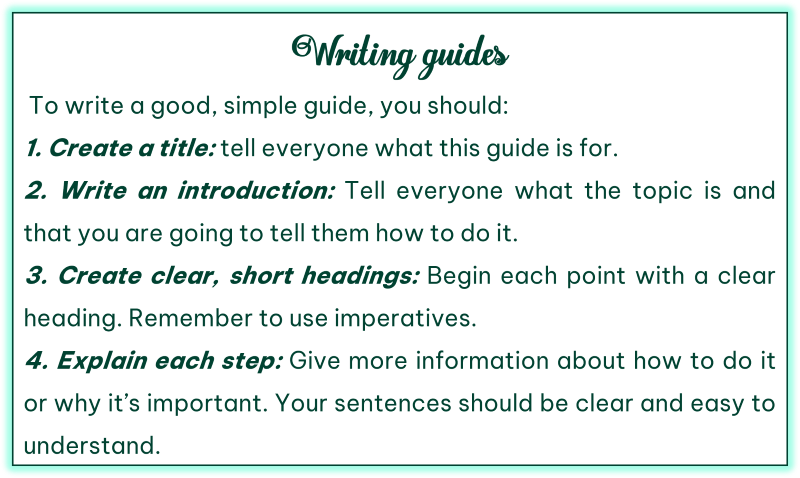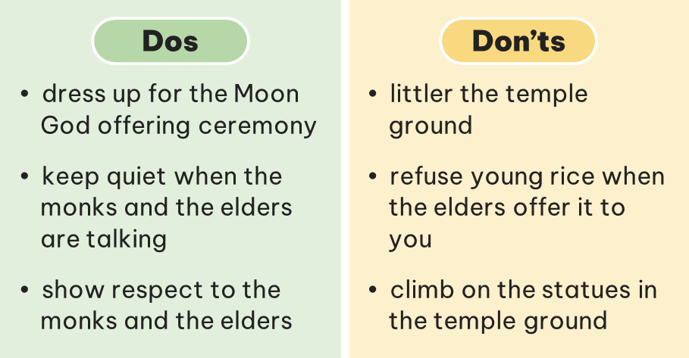TỔNG HỢP KIẾN THỨC 13 THÌ TRONG TIẾNG ANH: <Part 1>
1. Thì hiện tại đơn ( Simple Present tense)
1.1. Khái niệm
Thì hiện tại đơn dùng để diễn tả một sự thật hiển nhiên; một hành động diễn ra lặp đi lặp lại theo thói quen, phong tục, khả năng.
1.2. Công thức của thì hiện tại đơn
Đối với động từ thường:
Câu khẳng định: \(S+V\left(e/es\right)+O\)
Câu phủ định: \(S+donot/doesnot+V-inf\)
Câu nghi vấn: \(Do/Does+S+V-inf\)
Đối với động từ tobe:
Câu khẳng định: \(\text{S + be (am/is/are) + O}\)
Câu phủ định: \(\text{S + be (am/is/are) + not + O}\)
Câu nghi vấn: \(\text{Am/is/are + S + O?}\)
1.3. Dấu hiệu nhận dạng
Trong câu có chứa các trạng từ chỉ tần suất:
Every day/ week/ month…: mỗi ngày/ tuần/ tháng
Often, usually, frequently: thường
Sometimes, occasionally: thỉnh thoảng
Always, constantly: luôn luôn
Seldom, rarely: hiếm khi
2. Thì hiện tại tiếp diễn ( Present Continuous )
2.1. Khái niệm
Thì hiện tại tiếp diễn dùng để diễn tả những sự việc đang xảy ra tại thời điểm nói hay xung quanh thời điểm chúng ta nói, và hành động đó vẫn còn tiếp tục xảy ra.
2.2. Công thức của thì hiện tại tiếp diễn.
Câu khẳng định: \(S+tobe\left(am;is;are\right)+V\left(ing\right)\)
Câu phủ định: \(S+tobe\left(am;is;are\right)+not+V\left(ing\right)\)
Câu nghi vấn:\(Tobe\left(am;is;are\right)+S+V\left(ing\right)\)
2.3. Dấu hiệu nhận biết thì hiện tại tiếp diễn
Trong câu có chứa các các từ chỉ thời điểm hiện tại. Ví dụ:
Now: bây giờ
Right now: ngay lập tức
Listen!: Nghe nào!
At the moment: ở thời điểm này
At present: ở hiện tại
Look!: nhìn kìa!
Watch out!: cẩn thận!
Be quiet!: Im lặng nào
3. Thì hiện tại hoàn thành ( Present Perfect )
3.1. Khái niệm
Thì hiện tại hoàn thành dùng để diễn tả một hành động, sự việc đã bắt đầu từ trong quá khứ, kéo dài đến hiện tại và có thể tiếp tục tiếp diễn trong tương lai.
3.2. Công thức của thì hiện tại hoàn thành.
Câu khẳng định: \(\text{S + have/has + V3/ed + O }\)
Câu phủ định: \(\text{S + have/has + not + V3/ed + O}\)
Câu nghi vấn: \(\text{Have/has + S + V3/ed + O?}\)
3.3. Dấu hiệu nhận biết thì hiện tại hoàn thành
Trong câu thường chứa các các từ sau:
Just, recently, lately: gần đây, vừa mới
Already : đã….rồi , before: đã từng
Not….yet: chưa
Never, ever
Since, for
So far = until now = up to now: cho đến bây giờ
4. Thì hiện tại hoàn thành tiếp diễn ( Present Perfect Contiuous )
4.1. Khái niệm
Thì hiện tại hoàn thành tiếp diễn : thường dùng để diễn tả sự việc bắt đầu trong quá khứ; tiếp tục ở hiện tại và có thể tiếp diễn tiếp ở thì tương lai.
4.2.Công thức của thì hiện tại hoàn thành tiếp diễn.
Câu khẳng định: \(S+have/has+been+v\left(ing\right)\)
Câu phủ định: \(S+have/has+not+been+v\left(ing\right)\)
Câu nghi vấn: \(Has/have+s+been+v\left(ing\right)\)
4.3. Dấu hiệu nhận biết thì hiện tại hoàn thành tiếp diễn
Trong câu xuất hiện các từ sau:
All day, all week, all month: cả ngày/ tuần/tháng
Since, for
HẸN CÁC BẠN Ở PART SAU NHÁ !!





1. The second prototype performed worse than the first one. (than)
→ The first prototype ____performed better than the second one_____________________________.
2. With advanced technology, researchers are able to explore distant planets. (thanks)
→ Researchers _____are able to explore distance planets thanks to advanced technology________________________________.
3. The scientists were collecting data; the earthquake occurred. (when)
→ The scientists ___were collecting data when the earthquake occurred__________________________________.
okokokokok